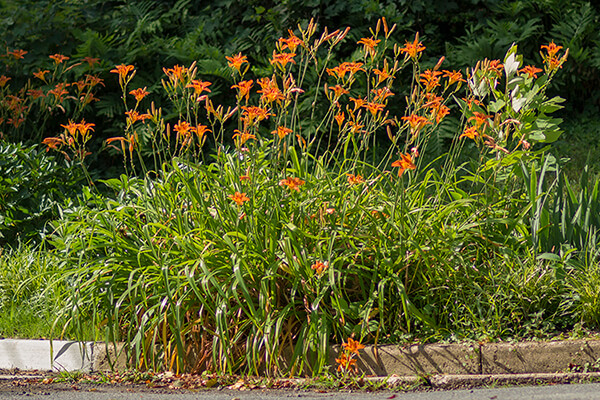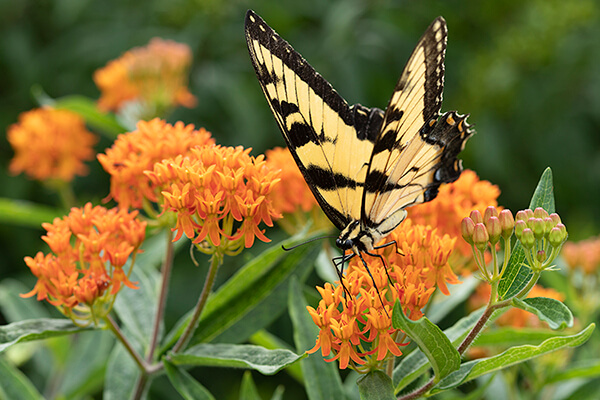DITCH THE "DITCH LILY"
It is ubiquitous. The plant with striking orange flowers thriving in dense drifts. In the shade, in the sun. In moist and dry locations. On roadsides, in suburban yards. Hemerocallis fulva. Introduced to the ornamental trade from Asia in the late 19th century, the common daylily has since been cultivated endlessly due to its hardiness and its beauty.
There's not much use for daylilies
But beauty is only skin deep. Considered an invasive perennial in the Mid-Atlantic region by the US Fish & Wildlife Service and the National Park Service, the common daylily naturalizes in the wild and displaces our native plants.

Deer turn up their snouts at them in my neighborhood (as Bambi does with most alien invasive plants) and on close inspection not many other living things are attracted to them either. I’ve observed that there are neither bees, nor butterflies nor any other beneficial insects drawing nectar or pollen from the trumpet-shaped blooms.
Wikipedia claims the orange daylily is sterile, multiplying wildly not by seed but through their fibrous roots and rhizomes. Originally brought to America with the settlers, the orange daylily is actually the cultivar ‘Europa’. And with now over 60,000 registered cultivars, there is the possibility of other daylilies becoming invasive over time, too.

A more wildlife-friendly option
So if you love the color orange, and it seems as though many people do, why not ditch the “ditch lily” in your garden and replace it with an overwhelmingly friendlier orange flowering perennial? A native species. A pollinator attractor. A plant that is the larval host to our Monarch, Grey Hairstreak and Queen butterflies: Asclepias tuberosa. Commonly named butterflyweed or butterfly milkweed, this native grows 1-3 feet in height and can handle sun, part sun, dry or moist conditions, preferring well drained soils.
Tuberosa blooms cheerfully in June and July, concurrently with the common daylily. Butterflies and myriads of other pollinators can be found caressing the clusters of tiny neon flowers. The orange-reddish and black insects that congregate on the plants are milkweed bugs.
They draw their nourishment from the seeds in the milkweed pod but do not harm the plant itself. These critters are fascinating to watch — resist the urge to disturb them and just let them do their thing.
Butterfly weed is indisputably low maintenance like most native plants are. And it’s well-behaved and will not attempt to overtake your garden. Deep rooted and therefore drought tolerant, tuberosa is also very long lived. Plant en masse for a display of beneficially brilliant orange.
